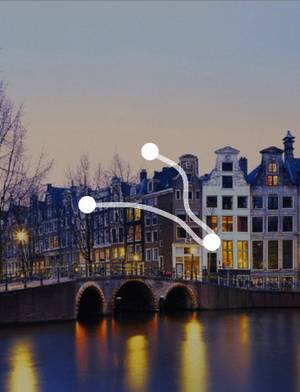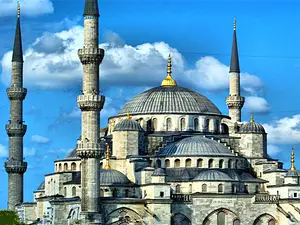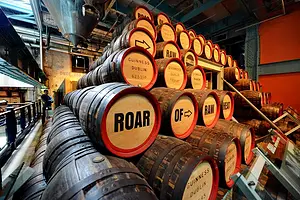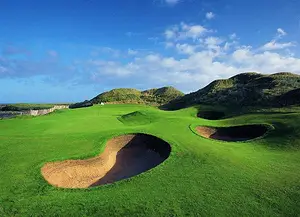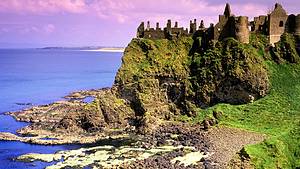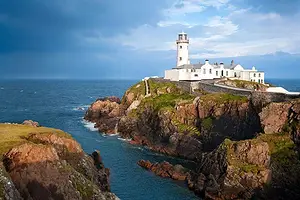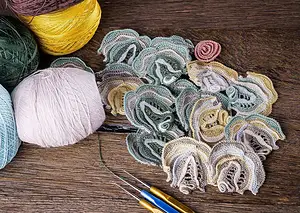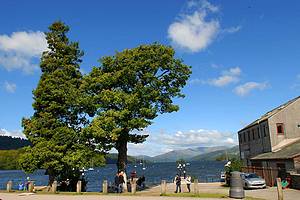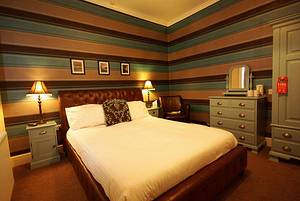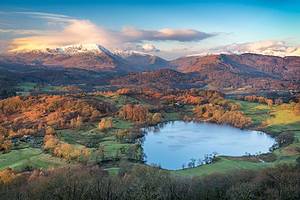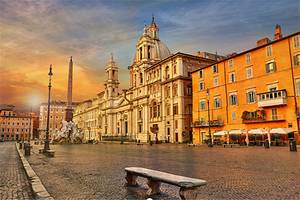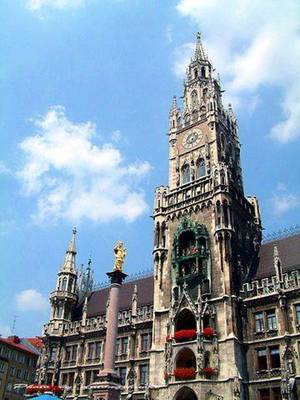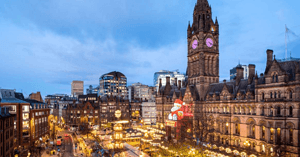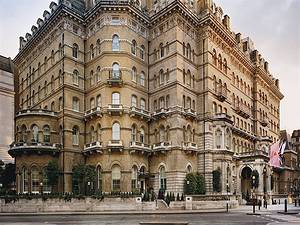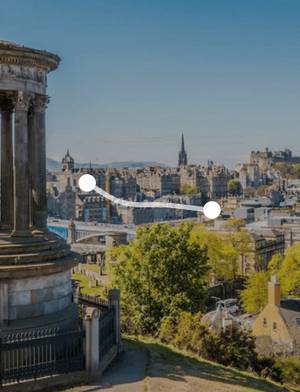8-Day Self-Drive Tour of the Wild Atlantic Way in Ireland
4 cities |
21 attraction(s) |
total distance 202
km
 TIPS
TIPS
Day1
Day2
Day3
Day4
Day5
Day6
Day7
Day8
Day1: Galway
3 attraction(s) ·
5 km
1
National University of Ireland, Galway
Galway University is a branch of the National University of Ireland system.
2
km
2
The Cathedral of Our Lady Assumed into Heaven and St Nicholas, also known as Ard-Eaglais Mhaighdean na Deastógála agus Naomh Nioclás, is a Catholic cathedral and the largest and most influential building in Gorway.
3
km
3
National Aquarium of Ireland is the largest place in Ireland to showcase marine animals, with over 150 species of marine creatures.
Day2: Galway
2 attraction(s) ·
35 km
1
There are famous karst landforms here. The road surface is bumpy but unique. The spectacular natural landscapes can impress visitors. It also has unique wildlife, as well as ancient stone tombs and stone monuments.
35
km
2
The Cliffs of Moher are located on the west coast of Ireland, about a 1-hour drive from the third largest city in Ireland, Galway. As the highest cliffs in Europe, they are one of the iconic landmarks of Ireland. The cliffs stretch for 8 kilometers along the west coast of Ireland, facing the Atlantic Ocean, with the highest point towering 214 meters above the Atlantic sea level, very spectacular.
Day3: Dingle
1 attraction(s) ·
0 km
1
Dingle Bay
Dingle Bay is located in County Cork in western Ireland. It is part of the Dingle Peninsula and Dingle Bay, marking one of the westernmost areas of the Irish mainland. The northern shore of Dingle Bay is a port town - Dingle town.
Day4: Killarney > Dingle > Killarney
3 attraction(s) ·
124 km
1
Kerry is not the city of Kaili in Guizhou, but Kerry County in southwest Dublin. The Ring of Kerry is a popular 179-kilometer scenic route loved by tourists. Along the way, there are mudflats, cliffs, forests, and grasslands, where you can enjoy the rolling hills and pastoral landscapes. In addition to driving or taking a bus tour, there is also an annual cycling race held here.
67
km
2
Killorglin
Welcome to the entrance of the Iveragh Peninsula, also a must-see on the famous Ring of Kerry tourist route. The town has many charming colorful houses that are enchanting. Additionally, this is also the host of the oldest 'Puck Fair'. If you plan to stay here for a long time, you can refer to the accommodation and restaurant recommendations on the official website to meet your needs.
57
km
3
This small fishing village is located near the center of Kaili's loop, with excellent views. Travelers planning a day trip can have lunch here, and those on a two-day trip can consider staying overnight. It was also a favorite vacation spot of Charlie Chaplin, so there is an annual Chaplin Comedy Film Festival held here in August. In addition, it is also known for its delicious seafood, such as salmon. Accommodation and restaurant recommendations can be found on the official website.
Day5: Killarney
2 attraction(s) ·
14 km
1
Lough Leane is located on the western side of Killarney, and it is the largest lake in southwest Ireland. It occupies a significant portion of Killarney National Park. The lake is dotted with several islands, and some of them have been found to contain artifacts from the Bronze Age.
14
km
2
Killarney is a small town located on the Ring of Kerry route, with numerous lakes and castles hidden among the mountains and lakes. It is a great place for leisure and relaxation. Killarney is well-known for Gaelic football, and if you're lucky, you can also catch an Irish football match.
Day6: Killarney
2 attraction(s) ·
9 km
1
Ross Castle was built in the 15th century and is located on the shores of Lough Leane, in the southwestern outskirts of Killarney. It was once the stronghold of the O'Donoghue clan, an Irish tribe. The castle was difficult to capture by land and was the last stronghold to surrender to Cromwell's forces in the 17th century.
9
km
2
Muckross Villa was built in 1843 for Henry Arthur Herbert and his wife. The Tudor-style building has 65 rooms, and its most notable feature is that Queen Victoria of England stayed here for three days in 1861 to alleviate the pain of her husband's death. As the Queen had a strong affinity for Oriental culture, the villa still displays items she left behind, many of which were purchased from China at the time. Located in Killarney National Park, the villa sits by the shore of Killarney Lake, with the backdrop of Ireland's highest mountain, Carrauntoohil.
Day7: Dublin
4 attraction(s) ·
8 km
1
The old library on campus houses the Irish national treasure, the Book of Kells, which was completed around 850 AD. It was manually illustrated on vellum with natural pigments by monks at that time. The Book of Kells is divided into four volumes, and only two volumes are displayed inside the library, one with text and the other with illustrations, showcasing two pages each day. The architecture of the library's long corridor is also impressive, and it was featured as the library of the magical school in the first Harry Potter film. It is definitely worth a visit.
3
km
2
The Dublin Spire, also known as the Monument of Light, is a giant stainless steel needle-shaped monument standing at a height of 121.2 meters. It was built on the site of the bombed O'Connell Street. The spire, designed by Ian Ritchie Architects, aims to be a bridge between art and technology. The design of the Dublin Spire has won multiple international awards. The installation of the first part was completed on December 18, 2002, and the remaining five 20-meter sections were finished on January 21, 2003. The spire is a slender cone with a diameter of 3 meters at the base and only 15 centimeters at the top. Originally, the plan was to place the world's tallest sculpture at the top, but it was shelved due to difficulties in obtaining approval and some environmental regulations. At dusk, the bottom and top 12 meters of the spire are illuminated, resembling a lighthouse piercing the night sky and guiding the entire city.
4
km
3
Guinness Storehouse is the production place of the most famous Irish product - Guinness beer, and it is one of the most prestigious attractions in Dublin. You can learn about the entire production process of this beer in the brewery, and the exhibition in the Guinness Beer Exhibition Hall is also very interesting. The bar on the eighth floor is a great location to overlook the panoramic view of Dublin, and you can also get a large glass of original Guinness beer for free.
2
km
4
St. Patrick's Cathedral
St. Patrick's Cathedral in Dublin is located not far from Christ Church Cathedral. It is said that St. Patrick, the saint who brought Catholicism to Ireland, baptized two apprentices and converted them to Catholicism at an ancient well here. The church was first built in the year 450 and has been continuously renovated until the 14th century. Jonathan Swift, the author of "Gulliver's Travels," was once a bishop here. Due to the burial of many famous figures, this church holds a similar status in Ireland as Westminster Abbey does in the UK. St. Patrick's Cathedral in Dublin is one of the largest churches in Ireland, with a tower height of 43 meters, making it the tallest church in Ireland.
Day8: Dublin
4 attraction(s) ·
10 km
1
Phoenix Park is located in the northwest of the city center and covers an area of nearly 2000 acres. It is the largest city park in Western Europe. The residence of the President of Ireland is also located here and is open to the public every Saturday. For details, please visit the website of the President's residence at www.president.ie. The residence of the US Ambassador to Ireland is also located here, highlighting the special relationship between the two countries. Dublin Zoo, which was established in the 19th century, is also located in Phoenix Park.
6
km
2
Dublin Castle is a castle built by King George of England in the 13th century. It was used by the English king to store his personal wealth. Due to this reason, Dublin Castle holds a significant symbolic position in the Irish people's struggle for independence. Today, it is an important venue for national events in Ireland. The Castle's Chest Betty Library houses a fine collection worth seeing.
3
km
3
St. Stephens Park is located at the southern exit of Grafton Street, the commercial center, and is a great place to relax and take a walk after shopping.
3
km
4
Halfpenny Bridge, also known as Wellington Bridge, was built to commemorate Wellington's victory over Napoleon and is considered one of the symbols of Dublin. It is located south of the Temple Bar area. Spanning the River Liffey, it was officially opened in 1816 and was the only pedestrian bridge across the river in Dublin at that time. Initially, pedestrians were required to pay a halfpenny toll to cross the bridge, hence its name "Halfpenny Bridge."
